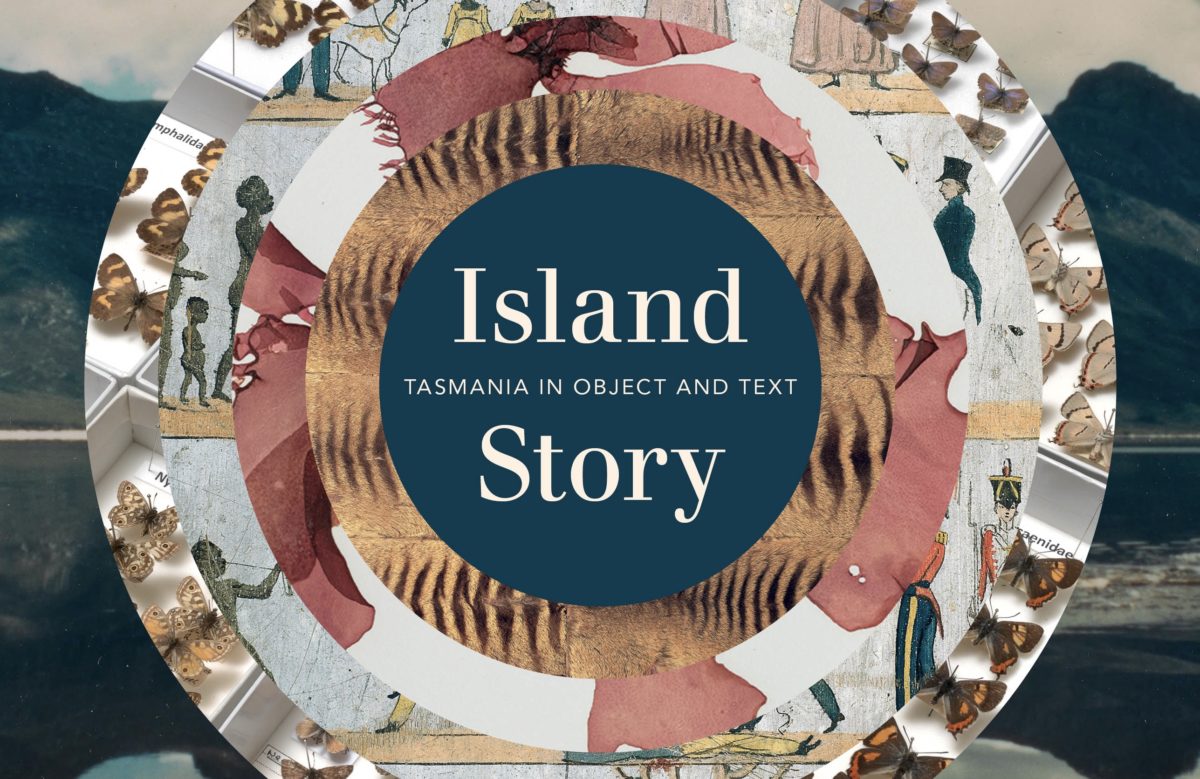
Tasmania lies just below mainland Australia like a hidden jewel, with its rainforests still standing, cooler temperatures, a treasure for the foodies and art and culture are found on nearly every corner.
Island Story: Tasmania in Object and Text provides a juxtaposition of text and images, allowing both elements of shine, but neither to dominate. Edited by Ralph Crane and Danielle Wood, the book takes us on a journey from the state’s past through to the present, allowing readers to understand how life in the state used to be, as well as draw links between the past and the present.
Island Story draws together unique and unusual items, along with full colour photographs from the collection at the Tasmanian Museum and Art Gallery (TMAG), and pairs them with original texts from local writers. The prologue describes this process in more detail, and highlights the amount of thought and reasoning behind each story. Each story connects with the next. The book aims to inspire you to visit Tasmania, connect with poets mentioned or revisit writers and museums. There are 248 objects or texts in this book and you’ll find it’s very interesting visually, as well as to read. You can really appreciate how much effort when into developing this book for our enjoyment.
The thylacine (Tasmanian tiger) has always generated interest and I enjoyed reading “Loop” by Cliff Foreshaw, and seeing its paired object, a thylacine rug. Thylacines play an active role in this book as does our indigenous counterparts. The macabre jawbone of a thylacine links to the skin of a lion which connects to the travelling case of Louise Lovely, which is linked with an extract from Mary Bjelke-Peterson and so on. Indeed, there are numerous images of skulls and animals throughout the book, including wombats, whale teeth, Tasmanian Devil skulls and butterflies in a display drawer, which were attached to a piece of memoir by Carmel Bird regarding the safety of the unwanted butterflies from England to be welcomed in Van Diemans Land.
“Closing Hells Gates: The Death of a Convict Station” was a cruel read, detailing the harsh punishments of those who escaped prison and were caught again by John Douglas and his men. Some prisoners were never caught, but instead starved to death amongst the bush outside. Pair this story with Douglas’ saw and you’ll have a cringeworthy moment.
Many of the included stories document the local Indigenous population, including “Memories” by Ida West which depicts nostalgia her childhood and a wish she’d learnt more about her own culture, and “The Wybalenna Petition” of 1846 where a group of Indigenous people signed a humble petition to not allow a certain person on their island due to their cruel ways towards the local indigenous population; it was a very sad read.
Another “highlight” comes from Caroline Leakey, who wrote a moving story about a slave whose life is subject to the whims of a high class snob and a gentlemen. It’s sad to think these type of stories actually happened. There is a decent collection of old artefacts of clothing, medals, silverware and furniture. All these and infused with the contemporary (but not as much as) the older stories.
You could whittle away an afternoon or more reading a chapter at a time, taking in all what Island Story has to offer. More than a coffee table book, it feels like a blast into the past, a reconnection to our forebears and enriched by our contemporary artistic friends. Island Story is a tribute to everything visitors and locals alike love about Tasmania, as well as an exploration of the darker corners of the islands past.
![]()
![]()
![]()
![]()
![]()
FOUR STARS (OUT OF FIVE)
Island Story, edited by Ralph Crane and Danielle Wood, is available now through Text Publishing.
